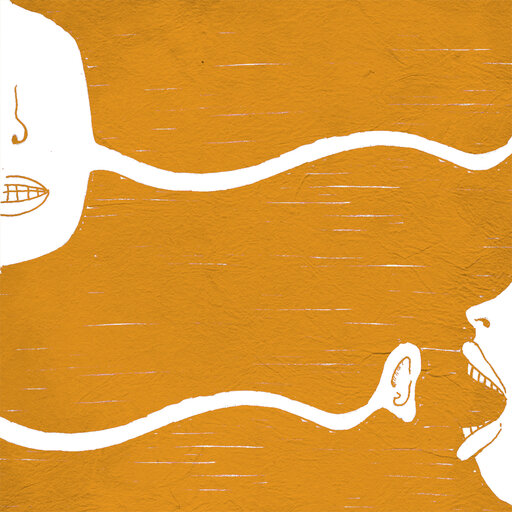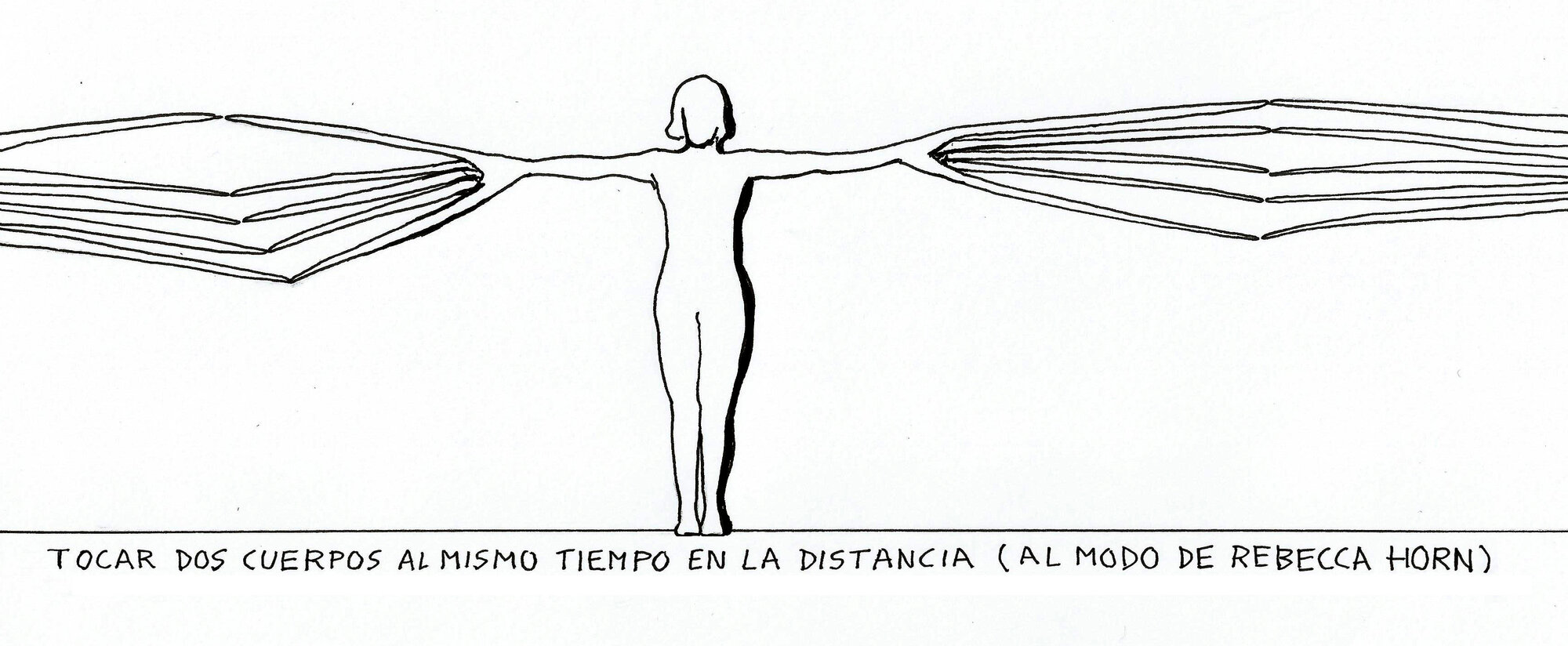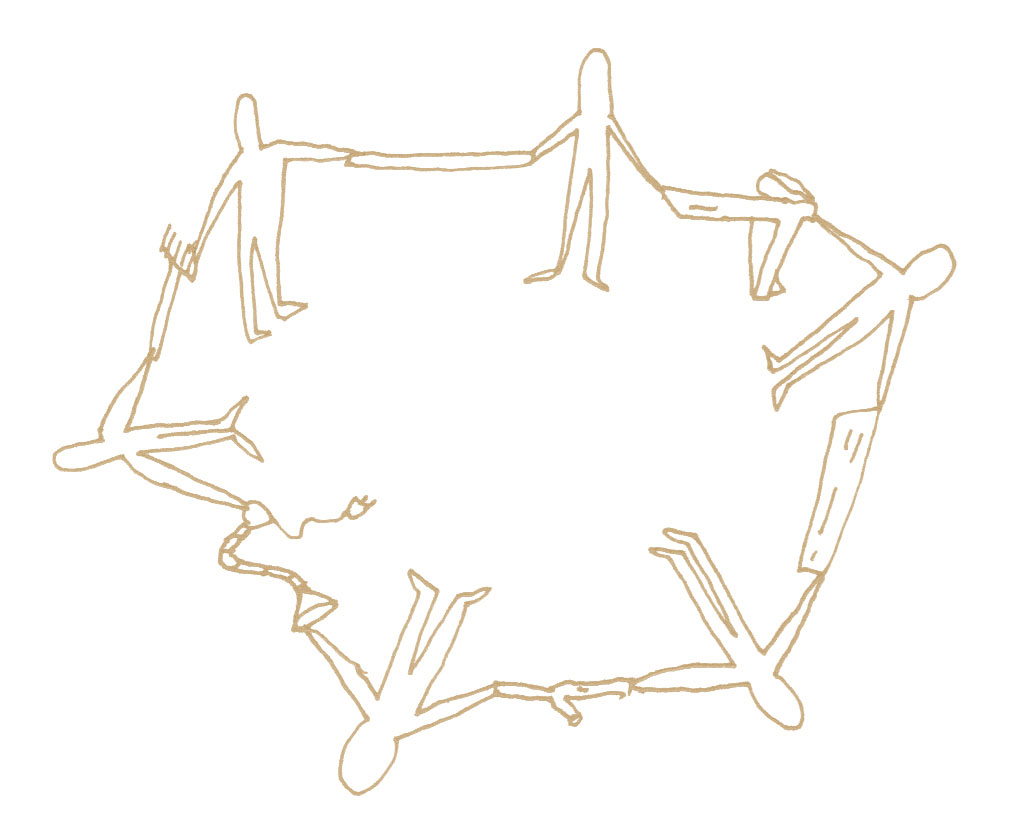
Pas 2: Estiraments cap al social
Si tens qualsevol dubte, suggeriment o col·laboració: corpus@laescocesa.org
Step 2: Stretching towards the social body
Step 2 is about stretching towards other bodies. Once situated and encountered, the bodies need to come closer to touching. They need to extend, to dissolve, to tie bonds that connect them to each other and with their surroundings. This exploratory path proposes to activate bodies beyond their preset physical boundaries and mental frames. So we can come closer, through and beyond distances and limitations of the world in which we develop ourselves with our subconsciousness.
The interaction distance between the bodies is an aspect that conditions interpersonal communication: there is a need of physical contact with the other and also the need to keep the required safe distance, while also providing some assimilation and comfort. If keeping distances keeps us apart, we propose to stretch our senses and bodily projections towards other bodies. Among some of the guidelines we can follow, we found:
To make bodies more flexible to their expansion
We propose the preparation of rituals that allow proximity from a distance, that deal with physical flexibility but also mental and sensorial. We suggest the incorporation of the following types of exercises:
- Exercises of physical stretching and body agitation: We dissolve body rigidity by stretching body parts. We can also stretch our eyes, tongue, nose, ears, etc. These kinds of exercises also allow us to notice interpersonal space, so that it helps us to understand and maintain safe distances.
- Exercises to stretch the senses: It is interesting to experiment being a headless body with no mental activity that limits our senses, allowing them to unfold organically and involuntarily, without trying to control them. We can also exercise senses the same way we work out the body: to stretch our hearing ability trying to reach distant sounds; to smell scents from afar; to imagine touching a body or an object without actually touching it, etc. This makes us aware of distance and proximity regarding other bodies, objects, and surroundings, not only through our sight. For example, do we sense from a distance the bodies’ heat, their opacity, smell, sound, their breathing?
- Telekinetic exercises: Telekinesis is the ability to move objects with the mind, by staring, through concentration exercises. It is focusing the sight at an object and trying to replace it from a distance. Articulating telekinetic exercises, although with a more metaphorical paradigm, can help us understand the projection of the body towards its exterior and its capacity to influence its surroundings.

To practice sensorial synesthesia
Synesthesia is when the body becomes a multisensorial organism in which seeing can become listening, and smelling can become touching or even tasting. Therefore, synesthesia works as a tool to touch other bodies with voice, looking or smelling. This expands the sense of touch by merging it with the other senses. To do so, it is possible to include:
- Exercises to touch with voice: to notice how we are touched by voices from other bodies.
- Exercises of hearing and bodily resonance: How can we listen to what surrounds us with our palms, our feet, our eyes? How can we feel vibration, how do we resonate?
- Exercises of sensorial interference: For example, to notice what colors we get from a voice, what smells we get from a gaze, what tastes we get from a scent, etc.
- Modes of nonverbal communication: To notice the different textures, sounds, smells, and experiences from a smile, a stare, a grin, a whistle, a pat on the back, etc.
To synchronize emotions
When bodies stay in the same place and share the same surroundings and 'atmosphere', it is possible to produce an affective contagion. This way, the social influences and impregnates the individual biological constitution, generating a continuum between body, space, and collective. In this line of action, we propose:
- Exercises of collective breathing to end up conspiring together, breathing together. This will synchronize the bodies and their vital signs.
- Exercises of synchronizing body movements, as if they were connected by an invisible thread, so that a stimulus-response is established between the action of each body and the rest.
- To work on telepathy as an exercise of mental connection of bodies, of recognition, and empathy. To practice the flow of ideas from a body to another. How can I transmit what I am thinking to another body?
- To use objects that are energetically and/or affectively charged in rituals or narratives to synchronously alter the emotional state of the group.
- Exercises of transmitting energy flows from one hand to others, or of energetic cleansing among bodies.
To interact with prostheses
In the stretching of senses, bodies can also engage in the mediation of objects like prostheses. The goal is not to protect us by separation, rather to extend us to facilitate interaction. To do so, we suggest the following measures:
- To re-define: To use objects around us (a broomstick, a piece of cloth, a pen, a paper ball…) and give them another use. They become expansion prostheses to 'touch' and establish energetic connections among bodies and other objects. They also maintain safe distancing (e.g. a dance of sticks).
- To create: Objects or prostheses that allow us to amplify body experiences (enlarged gloves, sound gloves, …), to preserve individual spaces of safety (hats and clothes that keep others from coming closer than the safe distance), to communicate from a far in a different way (communicating vessels, masks with pencils to draw with facial expressions, clothes that generate sound, ...), etc.
- To build: Objects, furniture, and architectures that question the current inhabiting modes and propose new uses, functions, and experiences to the bodies present.


Pas 2: Estiraments cap al social
Si tens qualsevol dubte, suggeriment o col·laboració: corpus@laescocesa.org